 alt="Puer Surrounding Counties and Towns: Weekly & Special Local Markets Travel Guide"
/>
alt="Puer Surrounding Counties and Towns: Weekly & Special Local Markets Travel Guide"
/>
Torch Festival of Lisu Ethnic Minority
Basic Introduction of the Festival
Chinese Name:傈僳族火把节
English Name:Torch Festival of Lisu Ethnic Minority
Every ethnic group has its own traditional festivals with unique characteristics. The Torch Festival is an ancient and important traditional festival of the Lisu ethnic group, rich in folk culture. On this day, local people gather together to celebrate by worshipping and lighting torches, and performing torch dances, all to wish for an abundant harvest and prosperous livestock.
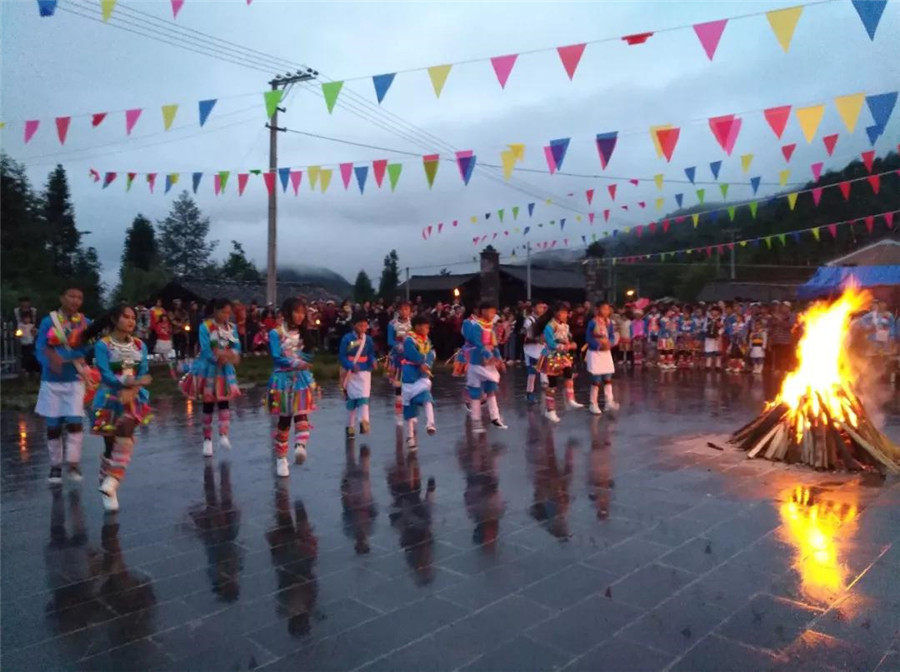
The Torch Festival is a traditional festival of the Dehong Lisu people, celebrated on the 24th and 25th days of the sixth month of the lunar calendar each year. Celebrating the Torch Festival with the Lisu people is filled with special charm; on this day, the village is lively and bustling. People dress in festive attire, families reunite, pigs are slaughtered, sheep are butchered, and everyone engages in lively conversation while enjoying water liquor, singing and dancing, with everyone discussing unity and each household offering blessings to one another.
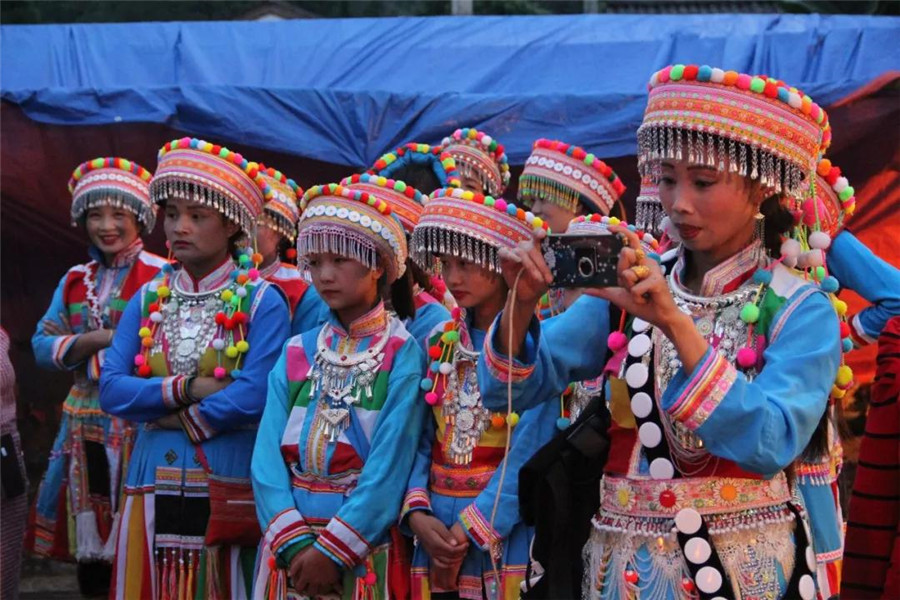
On this day, as the birds return to their nests and the sun sets behind the mountains, people light their torches, moving from house to house and from yard to yard, chasing away pests. The torches are waved side to side and danced up and down. Elders recite as they move the torches: ‘Burn the fleas, burn the mice, burn the demons, burn away all harmful insects!…’ Then the elders take their torches to the fruit trees, chanting: ‘Bloom! Bear fruit! Let the people harvest!’ Everyone echoes, ‘Bloom! Bear fruit! Let flowers and fruits cover the mountains, let grain fill the granaries!’
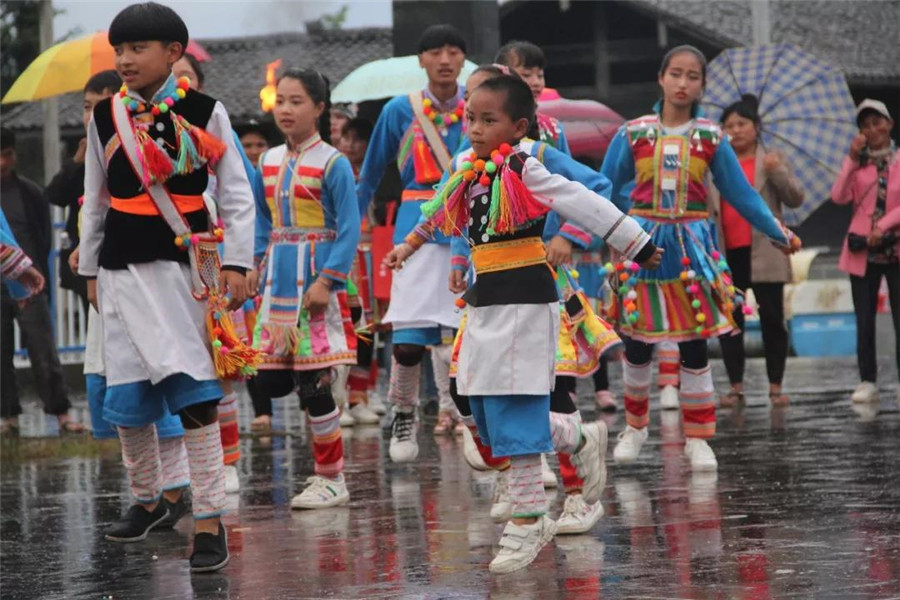
As night falls and the fire pits are brightly lit, people joyfully dance the lusheng (bamboo pipe) dance and the sanxian (three-stringed lute) dance. Holding hands warmly, they participate in jumping games and sing the folk narrative long poem called “Torch Festival Tune.” This tune is also known as the ‘Half-Year Production Tune,’ summarizing the production experiences of the past half year. By this time, crops such as buckwheat and potatoes have ripened and been harvested. People sing to celebrate the harvest, dancing joyfully, often until dawn.
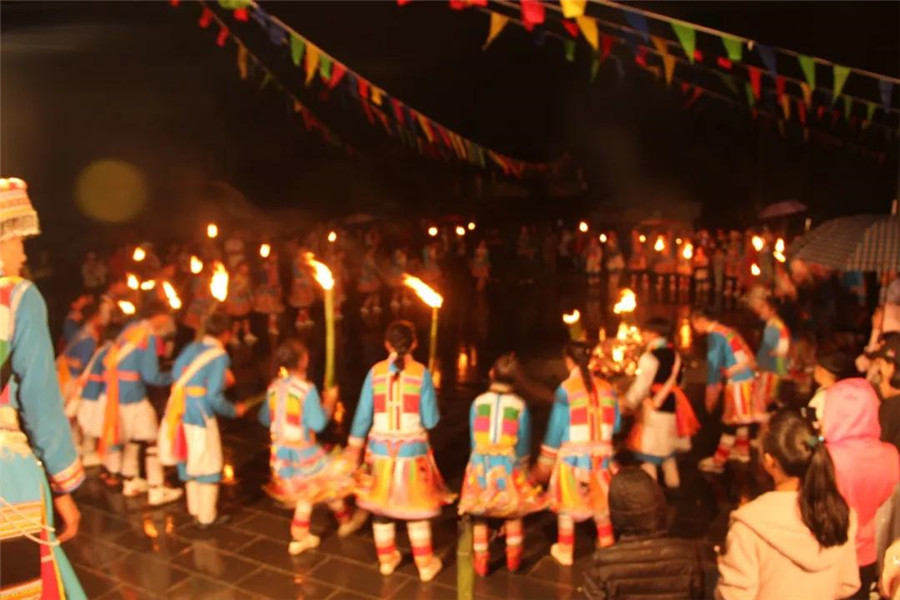
Local Activities
1. Gathering and Preparations
- Family Reunions: The festival is a time when families come together, reinforcing familial bonds. People dress in traditional attire to celebrate.
- Feasting: Families prepare festive meals, which may include special dishes featuring locally sourced ingredients. Pork, lamb, and other meats are often prepared for communal feasts.
2. Worship and Rituals
- Torch Lighting Ceremonies: The festival begins with the lighting of torches, symbolizing the warding off of pests and evil spirits. This is typically done in the evening as the sun sets.
- Offering Prayers: Elders and community leaders may lead prayers to deities and ancestors, asking for blessings for a fruitful harvest and prosperity in the coming year.
3. Dancing and Singing
- Torch Dance: One of the highlights of the festival is the torch dance. Participants often swing and wave torches while dancing, creating a mesmerizing spectacle.
- Traditional Songs: People sing folk songs, including the well-known “Torch Festival Tune,” which summarizes agricultural experiences and aspirations for the upcoming harvest.
4. Games and Competitions
- Cultural Games: Various games and contests, such as tug-of-war, jumping games, and other traditional sports, are organized. These activities promote camaraderie and friendly competition among participants.
- Lusheng Festival: In some areas, performances featuring the lusheng (a traditional bamboo musical instrument) take place, allowing the youth to showcase their musical talents.
5. Torch Processions
- Torch Parade: Communities may organize procession events where people carry torches through the village, symbolically driving away misfortune and celebrating unity.
- Waving Torches: As part of the procession, participants may wave their torches in rhythmic movements, exhibiting coordinated dances.
6. Community Bonding
- Blessing Exchange: Households exchange blessings with one another, emphasizing themes of unity and goodwill.
- Storytelling: Elders share folk tales and stories about the origins of the village or cultural legends, educating younger generations about their heritage.
7. Harvest Celebration
- Celebrating the Bounty: The festival marks the successful conclusion of the harvest season. People celebrate by showcasing their haul of crops, such as buckwheat or potatoes, often sharing their yield with the community.
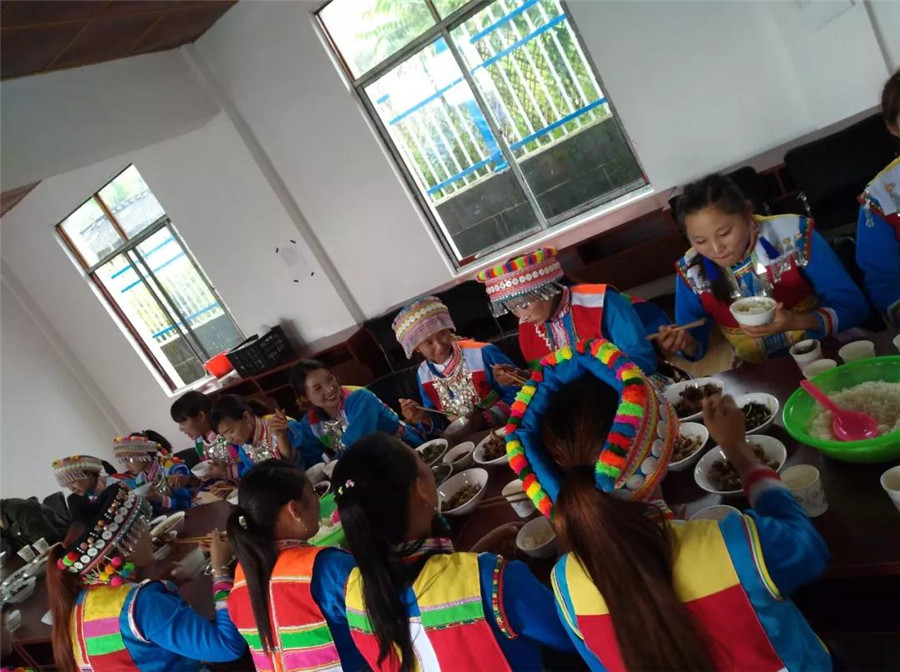

 7 Days GolfingTour
7 Days GolfingTour
 8 Days Group Tour
8 Days Group Tour
 8 Days Yunnan Tour
8 Days Yunnan Tour
 7 Days Shangri La Hiking
7 Days Shangri La Hiking
 11 Days Yunnan Tour
11 Days Yunnan Tour
 6 Days Yuanyang Terraces
6 Days Yuanyang Terraces
 11 Days Yunnan Tour
11 Days Yunnan Tour
 8 Days South Yunnan
8 Days South Yunnan
 7 Days Tea Tour
7 Days Tea Tour
 8 Days Muslim Tour
8 Days Muslim Tour
 12 Days Self-Driving
12 Days Self-Driving
 4 Days Haba Climbing
4 Days Haba Climbing
 Tiger Leaping Gorge
Tiger Leaping Gorge
 Stone Forest
Stone Forest
 Yunnan-Tibet
Yunnan-Tibet
 Hani Rice Terraces
Hani Rice Terraces
 Kunming
Kunming
 Lijiang
Lijiang
 Shangri-la
Shangri-la
 Dali
Dali
 XishuangBanna
XishuangBanna
 Honghe
Honghe
 Kunming
Kunming
 Lijiang
Lijiang
 Shangri-la
Shangri-la
 Yuanyang Rice Terraces
Yuanyang Rice Terraces
 Nujiang
Nujiang
 XishuangBanna
XishuangBanna
 Spring City Golf
Spring City Golf
 Snow Mountain Golf
Snow Mountain Golf
 Stone Mountain Golf
Stone Mountain Golf













 What Our Customers Say?
What Our Customers Say?
